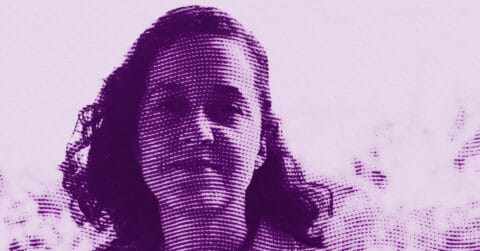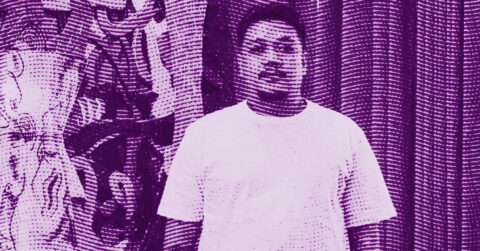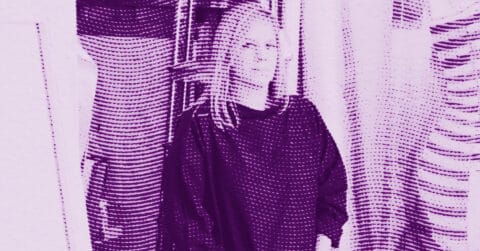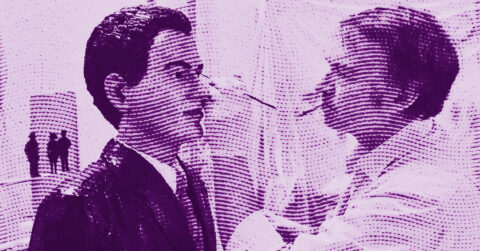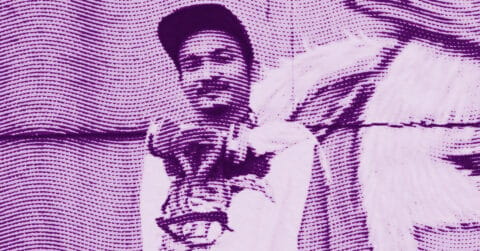Listen to me carefully, you bunch of snobs, for here we are faced with one of the last true provocateurs of our time, a man who still dares to do what art should have done since always: slap us with the truth of our human condition. Gottfried Helnwein is not one of those contemporary artists who indulge in the self-satisfaction of a sanitized art market. No, this Austrian turned Irishman has confronted us for more than fifty years with our deepest shadows, through a work that makes martyred childhood the relentless mirror of our societies.
Born in 1948 in a Vienna still haunted by the ghosts of Nazism, Helnwein grew up in that atmosphere of complicit silence so well described by Stefan Zweig in his memoirs of exile. This broken city, where no one sang or laughed, where adults tried to forget in a collective amnesia, forged the rebellious artist we know. From adolescence, he refused conventions, dropped out of school, rejected authority in all its forms. His first artistic transgression, that supposed portrait of Hitler painted with his own blood which earned him his expulsion from art school, already announced the radicality of his aesthetic commitment.
The hyperrealism of Helnwein transcends mere technical prowess to become an instrument of resistance. His children with bandaged faces, his little girls with gaping scars, his toddlers holding weapons of war are not gratuitous sensationalism but an imperative inner necessity. As he himself declared: “From my earliest age, I have always seen violence around me and the effects of violence: fear” [1]. This violence, he transforms it into disturbing beauty, into grating poetry that forces us to look at what we would prefer to ignore.
His first Viennese exhibitions in the 1970s triggered violent protests, exhibition closures, and police confiscations. The bourgeois public of the time could not bear these images of tortured children that too crudely referred to the recent crimes of History. Yet, Helnwein persists and signs, convinced that art must serve as a goad to the collective conscience. His watercolors of mutilated children quickly became his aesthetic signature, a trademark that never ceased to disturb.
Helnwein’s work is deeply rooted in the European literary tradition, particularly in the Kafkaesque universe of the absurd and alienation. Like Franz Kafka, the Helnweinian individual finds himself trapped in a system that inexorably crushes him. The bandaged child becomes the universal metaphor of modern man, a victim of social mechanisms that he does not understand and cannot control. This kinship with the Prague writer is not coincidental: both grew up in the dying Austro-Hungarian Empire, both witnessed the collapse of bourgeois certainties, both made existential anguish the heart of their creation.
In Kafka, the protagonist literally transforms into an insect in The Metamorphosis, undergoing a mutation that makes him a stranger to his own family. In Helnwein, the child undergoes an inverse metamorphosis: he retains his human appearance but bears on his face the stigmata of a violence that transforms him into a hybrid creature, half-angel half-demon. This transformation occurs through wounding, through mutilation, through the addition of medical accessories that dehumanize while paradoxically revealing the very essence of humanity. The Austrian artist pushes the logic of the absurd even further than Kafka: where the writer maintains an ironic distance, Helnwein plunges us directly into horror with no escape possible.
Helnwein’s creative process is akin to Kafka’s in its quasi-obsessive method. Like the author of The Trial who wrote at night, haunted by his nightmarish visions, Helnwein works in absolute solitude, surrounded by his mutilated dolls and his visual references gleaned from European morgues. This solitary dimension of creation, this necessity to cut oneself off from the world to better reveal it, constitutes a common trait between the two artists. For both, art is born from the impossibility of living normally in a world gone mad.
Helnwein’s hyperrealistic technique serves this aesthetic of unsettling strangeness dear to Kafka. His children with photographic precision faces evolve in indeterminate spaces, out of time and space, exactly like Kafkaesque characters evolve in anonymous and labyrinthine urban settings. This precision of detail in the service of the unreal creates a constant sense of unease in the viewer, who can no longer distinguish dream from reality, nightmare from normality. Helnwein’s art functions like a machine for producing anguish, exactly like Kafkaesque literature.
The influence of American popular culture on Helnwein’s work constitutes the other pillar of his aesthetic. Donald Duck, this tutelary figure of his Viennese childhood, traverses his entire artistic production like an obsessive leitmotif. This attachment to Disney’s duck may seem incongruous in an artist who denounces the violence of the contemporary world, but it actually reveals an aesthetic strategy of great coherence. Donald Duck embodies for Helnwein the antihero par excellence, the magnificent loser who resists all adversities without ever losing his dignity.
This fascination with the Disney universe is part of a broader sociological approach that questions the mechanisms of mass culture. Helnwein uses the aesthetic codes of American comics to better divert, pervert, and turn them against themselves. His grimacing Mickey Mouse, his cartoon characters transformed into threatening creatures reveal the dark side of the entertainment industry. The artist operates a radical critique of consumer society by using its own weapons, its own symbols, its own references.
This strategy of diversion finds its apogee in his monumental installations like Ninth November Night, created in 1988 in Cologne to commemorate Kristallnacht. One hundred meters of life-sized children’s faces parade between the Ludwig Museum and the cathedral, irresistibly evoking the selections of the concentration camps. The public cannot escape this forced confrontation with History, exactly like consumers cannot escape advertising in the urban space. Helnwein turns the mechanisms of mass communication against itself to create a counter-propaganda of memory.
Helnwein’s art is also rooted in a sociological critique of education and institutions. His bandaged children implicitly denounce educational systems that format and mutilate young minds. As he himself explains: “Childhood is that short innocent phase of life where an intact human being still possesses creativity and imagination before external educational systems destroy them” [2]. This pessimistic vision of school and education is part of the critical sociological tradition inaugurated by thinkers like Ivan Illich or Paulo Freire.
The Austrian artist extends this critique by denouncing the hypocrisy of democratic societies that claim to protect childhood while sacrificing it daily on the altar of their economic and political interests. His works function as so many revealers of our collective contradictions, our willing blindness, our compromises with institutional violence. The Helnweinian child becomes the symbol of all the collateral victims of our social systems, of all the innocences broken by our organized indifference.
This sociological dimension of the work finds its most explicit translation in his collaborations with musicians like Marilyn Manson or his works for the opera. Helnwein refuses to confine his art to the traditional spaces of elitist culture, preferring to invest in the circuits of popular culture to reach a wider audience. This democratic strategy of art joins his deep political convictions: art should not remain confined in bourgeois galleries but must descend into the street, be displayed on magazine covers, challenge the ordinary passerby.
The 2018 installation on the Vienna Ringturm, showing a blonde girl pointing a submachine gun at passersby, perfectly illustrates this desire for direct confrontation with the public space. This monumental work transforms the historic center of Vienna into an open-air gallery, forcing residents to question the violence that permeates their daily lives. It does not matter if the image disturbs or shocks: the essential lies in its ability to make people think, to challenge certainties, to awaken sleeping consciences.
Helnwein’s work is also part of a psychoanalytic reflection on collective trauma and memory. His wounded children can be read as so many symptoms of historical repression, as the return of the repressed in the European unconscious. Post-war Austria, this amnesic society that refuses to face its Nazi past, necessarily produces obsessive images that haunt its collective dreams.
The artist functions here as a psychoanalyst of society, revealing buried traumas, forcing speech where silence reigns, imposing truth where lies prosper. His bandaged self-portraits, his mutilated faces refer each of us to our own wounds, to our own shadows, to our own compromises with violence. Art becomes collective therapy, exorcism of guilt, revealer of the repressed unconscious.
This psychoanalytic dimension explains the violence of the reactions that Helnwein’s works provoke. As art historian Peter Gorsen notes, the abused child constitutes “an original invention” that shatters our idealized representations of childhood [3]. This break with our reassuring mental constructions causes a salutary shock that forces us to reconsider our prejudices, our blindness, our denials. Helnwein’s art functions like a ruthless mirror held up to our societies: it reflects an image of ourselves that we would prefer not to see.
The recent evolution of Helnwein’s work, marked by his critique of “cancel culture” and political correctness, reveals the coherence of his artistic commitment. For more than fifty years, this man has refused all forms of censorship, whether from the right or the left, religious or secular, political or moral. His creative freedom is not negotiated, not bargained, not compromised. In a world where contemporary art seems increasingly formatted by market imperatives and ideological injunctions, Helnwein maintains intact his power to disturb.
This intransigence earns him today the criticisms of those who yesterday applauded his rebellion against the bourgeois order. But the authentic artist cannot choose his battles according to intellectual fashions: he must remain faithful to his vision, whatever the cost. Helnwein pays the price of this fidelity to himself, of this refusal to submit to new conformisms, of this will to remain a free electron in an increasingly normalized world.
The work of Gottfried Helnwein traverses the decades without aging because it touches the universal human. His wounded children speak to all generations, to all cultures, to all sensibilities. They remind us that behind our masks of civilization hides always the same primitive barbarism, that under our beautiful humanist speeches persists the same indifference to the suffering of others. This disturbing but necessary truth makes Helnwein one of the rare contemporary artists still capable of moving us, of questioning us, of transforming us.
Faced with his monumental canvases, we can no longer feign ignorance or cultivate indifference. Art becomes again what it should never have ceased to be: a weapon of resistance against all forms of oppression, a cry of revolt against all injustices, a call to dignity in a world that cruelly lacks it. Gottfried Helnwein reminds us that the authentic artist is never a public entertainer but always a troublemaker, never a decorator but always a revealer, never a courtier but always a rebel.
In this era of generalized confusion where art is lost in the meanders of spectacle and commodification, Helnwein keeps alive the tradition of aesthetic commitment. His works prove to us that it is still possible to create without compromise, to denounce without concession, to resist without weakening. For this alone, he deserves our recognition and our admiration.
- Gottfried Helnwein, quoted in Los Angeles Review of Books, “Confronting the Intolerable”, January 2017
- Wikipedia documentation on Gottfried Helnwein, June 2025
- Peter Gorsen, quoted in the Wikipedia documentation on Gottfried Helnwein, June 2025
- Interview with Max magazine, “Der lange Schatten”, June 2024




